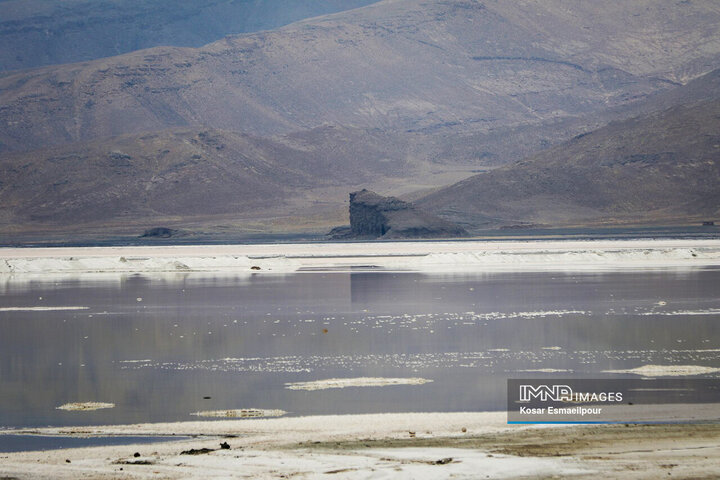Iran (IMNA) - However, decades of long-term drought necessitated extensive dam building, as well as high hot summer temperatures that accelerated evaporation and increased water needs in the agricultural sector, causing the lake to shrink dramatically.
The amount of water reduced from 30 billion cubic meters in 1999 to half a billion cubic meters in 2013. Furthermore, the lake's surface size has dropped from 5,000 square kilometers in 1997 to one-tenth of that in 2013.
The government has suggested a project to move water from the Zab River to the lake, with a budget of 3 trillion rials (almost $71 million at the official cost of 42,000 rials) set aside for this purpose.
With the operation of the Zab water flow tunnel to Lake Urmia, the lake's water volume will reach 14.7 billion cubic meters over the course of seven years and will refill the lake after years; about one billion cubic meters of water will reach the lake on a yearly basis.
The Iranian government has set aside 100 trillion rials (about $2.3 billion) to develop and carry out a project to transport water from the Kanisib Dam to the lake.
According to the project, around 36 kilometers of tunnels have been built with the goal of delivering 600 million cubic meters to the lake each year.
Reducing water use in agriculture by 40%—of which 36% has been accomplished so far—is one of the most significant factors in the rehabilitation of Lake Urmia.
According to the Ministry of Agriculture, there has been a 17 percent rise in crop output in the lake's watershed basin, defying expectations that water restrictions would result in lower agricultural production.
This rise demonstrates the extreme water waste in the lake's catchment area's agricultural sector.
The lake's water capacity was predicted to be above 4.620 billion cubic meters, a rise of 1.010 billion cubic meters over the previous year and 1.7 meters since 2014.
The above-average rainfall aided conservation efforts to maintain Lake Urmia, but it still requires 9.5 billion cubic meters of water to achieve its ecological level of 1274.10.
The lake was home to numerous migratory and indigenous creatures such as flamingos, pelicans, egrets, and ducks, and it drew hundreds of tourists each year who bathed in the water to benefit from the lake's medicinal powers.
Life has returned to Lake Urmia these days. The lake now has enough water for tourists to swim in, and birds and aquatic species such as flamingos and Artemia have returned, but it still has a long way to go to fully recover.


Your Comment